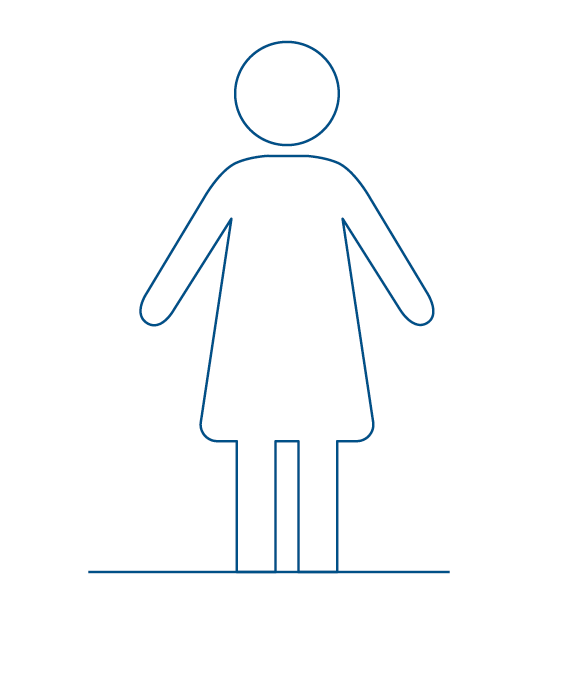HUS Helsinki University Hospital is a professionally-managed, multiprofessional workplace for the best experts. HUS employees work in dozens of fields under hundreds of job titles.
As at December 31, 2019, there were 26,536 HUS employees. This represented an increase of 1,600 from 2018 and 620 compared to the budget. The personnel structure has remained similar in recent years; nursing personnel account for more than half of the whole. There were 77% permanent employees, a relatively high number and near the average for local government. The majority of employees were in full-time employment relationships. The most common reason for part-time contracts was part-time child-care leave.
The average HUS employee was 43.8 years old, about two years less than the average in the local government sector. The age structure of personnel is well balanced, as witness for instance the retirement prognoses extending up to 2030, according to which the percentage of retiring employees at HUS is lower than in the local government sector on average.
The annual overall turnover of the permanent personnel was 8.3%, higher than the annual target. Personnel turnover excluding retirees was 5.5%. While turnover at HUS as a whole has increased, there are considerable differences in turnover trends between departments.
A total of 525 HUS employees retired in 2019. The number of retired employees increased by 9 compared to the previous year. The average retirement age was 61, slightly higher than in the previous year. The number of employees retiring on an old age pension increased, and their average age also increased somewhat on the previous year, being 64.5. Permanent personnel worked a total of 21,522 person years, 5.6% more (1,132 person years more) than in the previous year. The person year goal set in the budget was exceeded by 2.2% (470 person years).
The increase in the number of employees and of person years on the previous year is partly explained by personnel transfers as a result of transfers of business (1,004 employees), the combined impact of which was about 639 person years. The increase in person years on the previous year was caused by changes to regular working hours (364 person years) and to extra work, overtime and physicians on call (96 person years) and by other personnel growth (399 person years). On the other hand, other changes to regular working hours (hired labor and part-time employees) and changes in absences reduced the total (-220 person years). Person years and changes therein were monitored as part of the monthly reporting and interim annual reporting of the Joint Authority.
The average cost of a person year, including add-on costs, increased by 2.4% (EUR 1,448) on the previous year, to EUR 61,300. This was the result of contractual pay rises in employment and civil service contracts, the restoration of holiday pay and cash reserve to normal, and changes in personnel structure due to personnel transfers. Emergency services and the resources required for them grew as the emergency clinic functions of Malmi and Haartman Hospitals were transferred to HUS.

This represented an increase of 1,600 from 2018 and 620 compared to the budget.